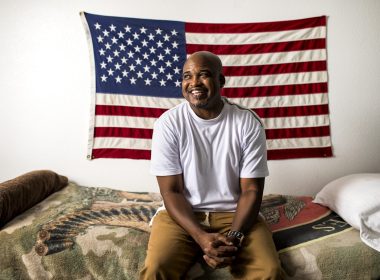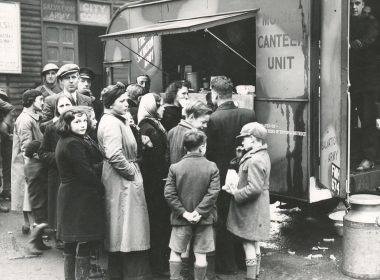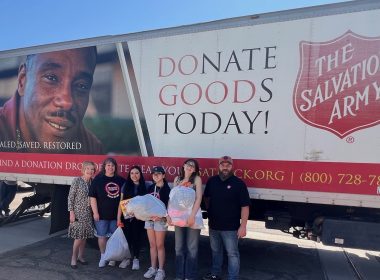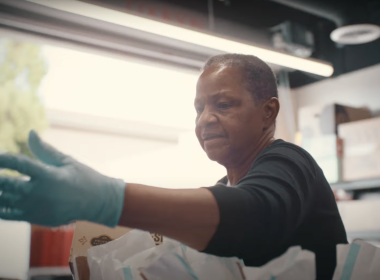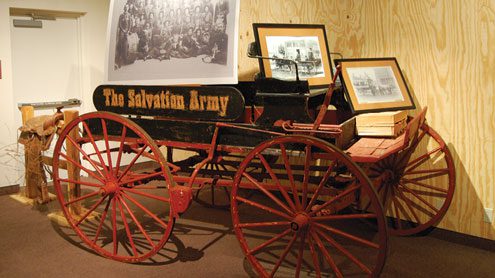Museum of the West opens its doors to the public.
by Karen Gleason
After years of keeping its treasures secure but unavailable for public viewing, The Salvation Army’s Museum of the West—located on the campus of the College for Officer Training (CFOT) at Crestmont—is now open to the public. Under the direction of Curator Misty Jesse, who also serves as CFOT’s director of library services, the museum welcomes visitors interested in the history of The Salvation Army’s Western Territory.
The museum and the archives are part of the CFOT curriculum department. Director of Curriculum is Major Brian Jones; CFOT Principal is Major Steve Smith.
When Jesse took over as curator in summer 2010, she acknowledged the importance of properly preserving the artifacts and mementos of the Army’ past, but equally important to her was sharing The Salvation Army’s history with others.
“It’s our history,” she said, “people should be able to come see it and enjoy it.”
A steady, and increasing, stream of visitors since the museum’s opening keeps Jesse busy, but she loves it.
“This is what people pass on to their children; otherwise, they won’t remember it,” she said.
Current exhibits
When one enters the museum today—into a room designed to look like the Booths’ fireside room with a fireplace and grandfather clock—the past immediately casts its spell, drawing you back to the early years of The Salvation Army. Along with the numerous displays, an early recruitment film, starring Commissioner Lawrence Smith as a young man, pitches the merits of Salvation Army officership.
The Alaska Division exhibit includes artifacts representing the Army’s ministry to this remote region. In its early days in the West, The Salvation Army maintained its own fleet to get around in Alaska.
Also on display are old slides from the Army’s Limelight Division. Utilized like today’s PowerPoint presentations, these “lantern slides” were developed in 1891 by Captain Joseph Perry in Australia, to illustrate his sermons and advertise a visit of William Booth. Booth—always forward-thinking—supported the new “Limelight Department” of The Salvation Army, which became the Army’s pioneering film production and presentation unit in Australia. Between 1892 and 1909, it created numerous productions, including 300 films.
The Faces and Places in the West exhibit takes visitors through the vast terrain of the Western Territory, and the lengths Salvationists undertook to get their message to the people. To reach the mining and lumber towns, the “charioteers” traveled by whatever means they could. When possible, Salvationists took trains—the clergy at this time received special passes for train travel. The Salvation Army had a wagon pick-up service in these early days—a harbinger of today’s fleet of trucks that pick up items and deliver them to the adult rehabilitation centers. One of these wagons, beautifully restored, is on display.
For Army musicians, the Western Bands exhibit chronicles notable bands and musical achievements. This section includes a live hook-up where visitors can listen to Army music; future plans may include a children’s area that allows kids to create hands-on music.
Other exhibits highlight The Salvation Army’s work during times of war—when they were on the front lines with the troops. In World War II, Salvationists took care of personal communication for soldiers, and provided “fun kits” for them. Whenever the United Service Organizations (USO) wasn’t in a particular region, The Salvation Army would go into action to take care of the soldiers’ needs.
These exhibits—currently on display at the museum—educate, entertain and inspire visitors. Jesse plans to change exhibits on a regular—probably semi-annual—basis.
Museum history
Since the 1970s—prior to the existence of an actual museum—the Western Territory collected and housed historical artifacts and memorabilia, first at Soldiers Hall and then at the previous location of the Army’s Adult Rehabilitation Centers Command in Torrance, Calif. Much of the museum’s current catalogue is composed of items sent during this time period.
The idea for a museum originated at the 1978 Commissioners’ Conference. Army leaders noted the need to preserve The Salvation Army’s history and gave direction to each territory to establish a museum.
In 1980, Commissioner Lawrence Smith dedicated the Western Territorial Museum, which was housed on the Crestmont campus. Major (then Captain) Ruth Sundin was charged with performing the research to set up the museum and to solicit donations of Salvation Army artifacts and other memorabilia.
Originally under the direction of the (then) School for Officer Training, the museum soon became the responsibility of the community relations and development department at territorial headquarters (THQ), with Captain Margaret Marler serving as its director. In 1983 Frances Dingman became museum coordinator.
In 2002, during Lt. Colonel (then Major) Doug O’Brien’s tenure at Crestmont as training principal, he secured funding for the establishment of a new museum and archive, also to be located on the Crestmont campus. Colonel George Church led the museum committee. Key goals have always been to preserve and display items related to the West’s history and to assist researchers and authors by making available historical information related to The Salvation Army.
During Commissioning weekend of 2002, General John Gowans (Ret.) dedicated the museum—then simply known as the Western Territory museum. Soon after its dedication, it adopted its current name, The Salvation Army Museum of the West.
For years, Dingman, as the museum’s first coordinator, maintained the historical acquisitions, keeping meticulous, hand-written notes on each item. Jesse acknowledges the hard work and dedication of Dingman, noting that the museum would not have the accurate records it does without her work.
“Because of her efforts,” Jesse said, “we are able to set up these exhibits—accurately annotated—and provide historical brochures and materials.”
Since then, the museum has had a number of directors and coordinators—Kimberly Mack, Captains Kevin and Linda Jackson, Matt Bingham and Clint Trimmer—all of whom endeavored to archive and maintain the historical material. Under Mack and Jackson, the museum was open to the public for a time; Jackson also created a traveling display and worked on developing oral histories. Bingham and Trimmer worked on cataloging and preserving materials, including digitizing the collection.
Researchers welcome
The Salvation Army Museum of the West offers a research center, which includes online access, microfiche/film viewing, and an extensive collection of the national War Cry along with other publications. The museum uses PastPerfect museum software, and Jesse and her staff continue to input the museum’s holdings into the online catalogue alongside thousands of entries currently available. Researchers are able to access these records at the museum by logging into the user-friendly PastPerfect system as a visitor.
Website
Further information about the museum is available online, at crestmont.edu/museum.htm. The website features a virtual exhibit of the Western Territory’s women’s ministry, including numerous photos, a history of the Home League and a timeline of past and present women leaders of the Western Territory. Former Museum Coordinator Clinton Trimmer created this virtual exhibit, in conjunction with Commissioner Pat Swyers, former territorial president of women’s ministries.
Donations
What Salvation Army historical treasures do you have stored in a box, packed away in your attic or basement? Because the museum currently has a lot of material to catalogue, Jesse asks that you first call before donating any items. The museum welcomes memorabilia commemorating significant events in Salvation Army Western Territory history—please note that documentation or notes denoting the date and people involved is vitally important.
The museum is actively seeking donations related to the Army’s Hispanic/Latino ministry—Latino corps are encouraged to submit noteworthy items and photos.
Admission to the Museum of the West is free and open to the general public Monday-Friday from 1:30-4 p.m. Guided and group tours are available by appointment; call (310) 544-6475. The museum is located on the campus of the College for Officer Training at Crestmont: 30840 Hawthorne Blvd., Rancho Palos Verdes, CA 90275.


